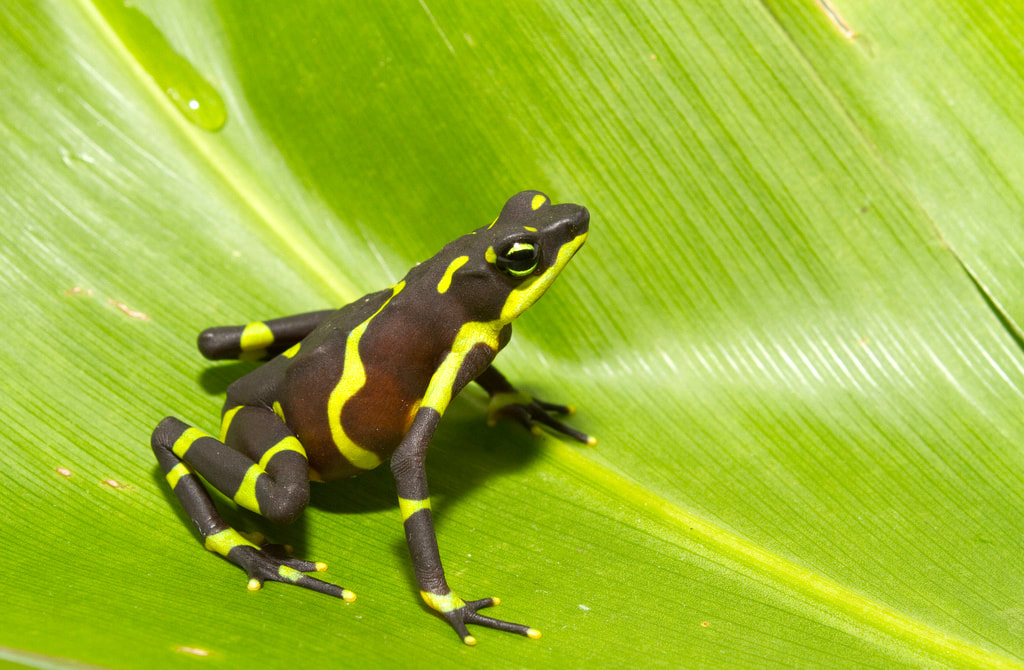|
This species of endangered toad is endemic to Panama and is found near stream banks in humid lowland tropical forests and surrounding rivers of the Chagres Basin in central Panama. Its scientific name is Atelopus limosus and it belongs to the toad family. Is has two color forms: a lowland color form is brown with a yellow nose and fingertips, while the upland color form is green with black chevron markings on its back.
This toad is threatened by habitat loss and chytridiomycosis, an infectious disease caused by a fungus that affects amphibians. This disease is so serious that the dramatic decline in amphibian populations around the world are attributed to it, and it is believed that is may lead to the extinction of numerous species. Amphibians are essential to our ecosystems because they are environmental gages and insect controllers. Little in known about the diet of this toad, but it is likely that they feed on beetles, ants, flies and mites. This species is diurnal and is typically found on the slopes and on the shores of narrow rocky streams in primary forests. Scientists from around the world have joined the efforts to cure amphibians. In Panama several conservation, rescue, and reproduction projects are taking place. Fun fact: the silt in its habitat matches the color of the toads; thus, they are inconspicuous on this surface.
1 Comment
Leave a Reply. |
AuthorAll people can be part of this blog, tell us about your experience in San Blas Islands or some tips for traveling to Panama. Archives
February 2024
Categories |
- Home
- SAN BLAS TOURS
- PANAMA TRAVEL | OTHER TOURS
- Boat Panama/Colombia/Panama
- MULTI-DAY TOURS
- PRIVATE TRANSFERS
- CONTACT
- ABOUT US
- FAQ
- Home
- San Blas Tours
- DESCUBRE PANAMÁ | OTROS TOURS
- MULTI-DAY TOURS
- Bote Panama/Colombia/Panama
- SERVICIO DE TRANSPORTE
- Contacto
- SOBRE NOSOTROS
- FAQ
- Home
- SAN BLAS TOURS
- SCOPRI PANAMÁ | ALTRI TOURS
- MULTI-DAY TOURS
- Barca Panama/Colombia/Panama
- SERVIZIO DI TRASPORTO
- Contatti
- CHI SIAMO
- COME PRENOTARE UN TOUR?
- FAQ
SITE MAP:
BEFORE BOOKING A TOUR TO SAN BLAS
|
LA CASA DE PAPEL 3 | SAN BLAS
|
San Blas dreams
|
MAPA DEL SITIO WEB:
ANTES DE RESERVAR UN TOUR A SAN BLAS
|
NUESTRO BLOG
|
SAN BLAS DREAMS
|
MAPPA DEL SITO:
prima di prenotare un tour alle san blas
|
|
SAN BLAS DREAMS
|

 RSS Feed
RSS Feed








